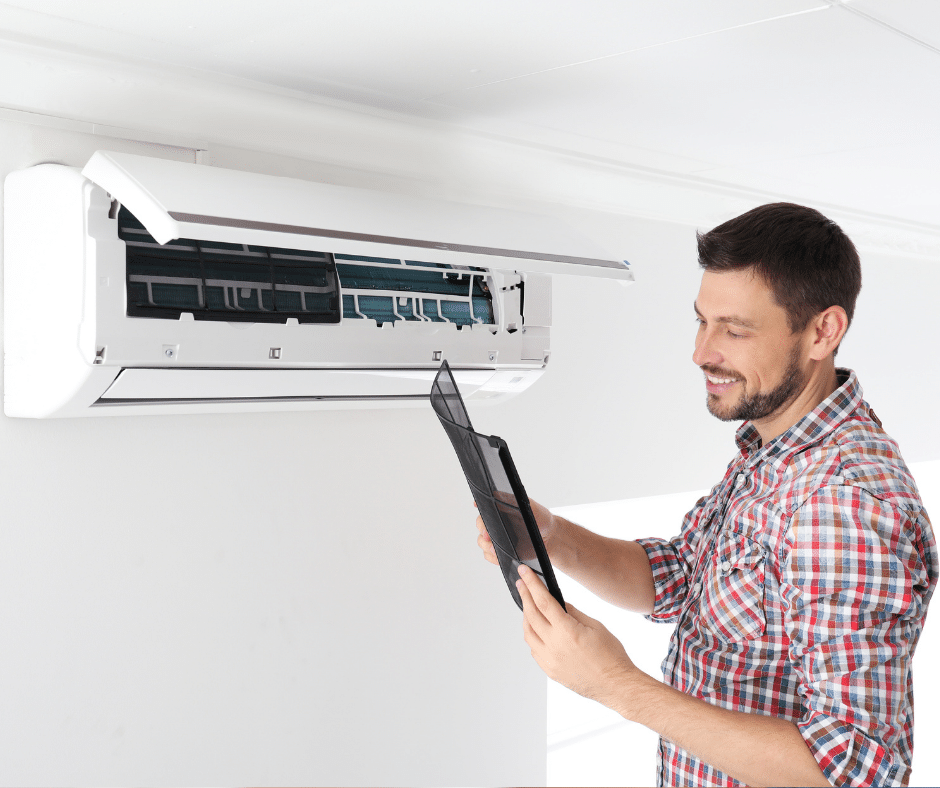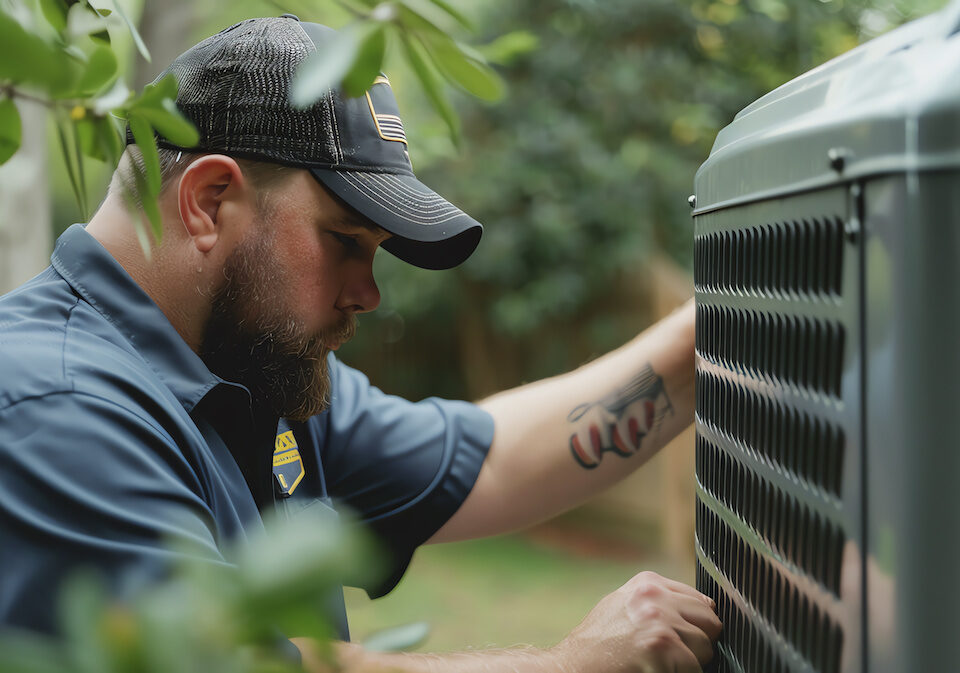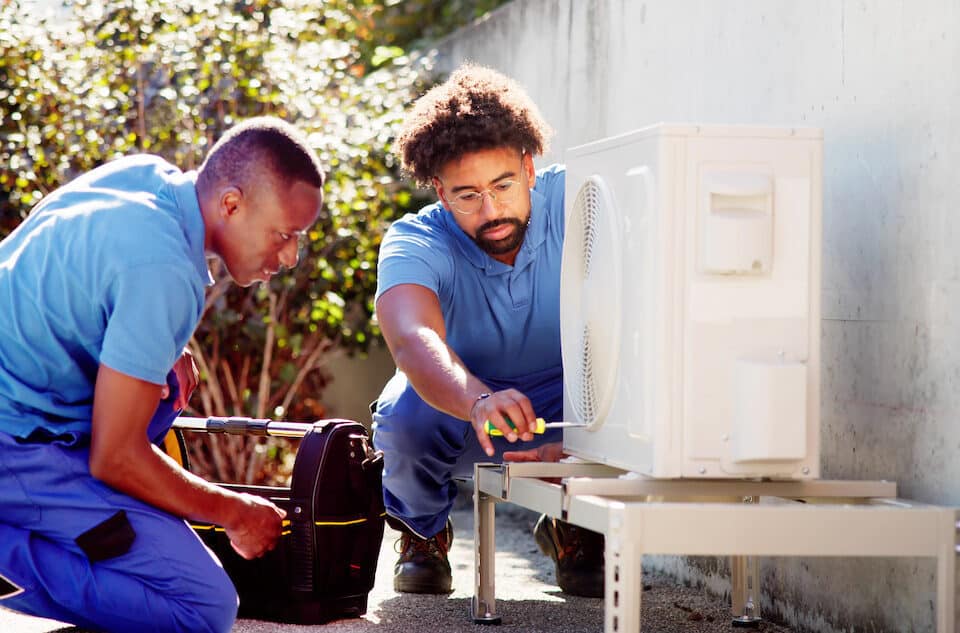How Your Central Air Conditioning Works

Learning How Your Central Air Conditioning Works
Air conditioning is a typical necessity for most homes. Suppose you live in a hot and humid climate. In that case, the lack of central air conditioning or a malfunctioning unit isn’t only uncomfortable. It can also be dangerous, risking your health and safety while indoors.
More commonly, homes in the south and other warm locations of the United States require centralized air conditioning systems. Central AC provides cool indoor air throughout the whole house, as opposed to other methods using a localized approach.
Even though air conditioning is a part of everyday life, most people don’t know how it works. That’s why TRUST Heating & Air is here to educate homeowners on how centralized air conditioning functions to keep your home cool, even on the hottest summer days.
Continue reading to learn how your home’s AC works to maintain a cool and comfortable environment for you and your family.
Keeping Your Home Cool
There are many methods to cool your home. Each option has its advantages, but they all work similarly to create a comfortable living environment. Depending on your home’s particular needs, you may have one of the following systems in place:
- Central air conditioning
- Floor mount or ductless mini-split
- Window AC units
- Portable air conditioners
The goal of any of the above cooling systems is to remove heat and humidity from inside the home and replace it with cooled air.
Central air conditioning is typically used for homes needing cool air in every room, while window units and other methods focus on localized cooling. For the most part, central AC is more expensive. However, it is necessary for those living in warmer, more humid climates.

What is Central Air Conditioning?
Central air conditioning quickly provides cool air for the entire home. What makes this method unique is the centralized unit with ductwork throughout the house, transporting air to each room.
In contrast, other homes may have one to three window AC units in the spaces of their house that have the highest need for cool air. These homes typically do not require central AC due to a cooler climate. Therefore, central AC is less common in the northern United States, where hot and humid weather is infrequent.
Central air conditioning systems will usually include the following components:
- Thermostat for operating the system
- Outdoor unit
- Indoor unit
- Copper tubing
- Expansion valve
- Ductwork
Two Types of Central Air Conditioners
Today’s homes come in all shapes and sizes. The style of central air conditioning you need depends on your specific living space. Perhaps you live in a modest two or three-bedroom house. Or maybe you enjoy a luxurious 5,000-square-foot mansion. Both styles can use central air conditioning, but the type may vary.
There are two major kinds of central ACs- Split-system and packaged. In the following sections, you’ll discover what sets the two apart.
Split-System AC
Split-system air conditioners are the more common of the two styles of central air. They include indoor and outdoor units that house different components essential to cooling your home.
The outside unit includes a heat exchanger, fan, and compressor. In contrast, the indoor unit contains another heat exchanger and a blower. The indoor unit also typically has a furnace or heat pump.
Furthermore, there are several options for split-system air conditioners, including:
- Single-stage systems– the basic split-system AC
- Two-stage systems– quieter and more efficient than single-stage systems
- Multi-stage systems– the quietest and most efficient option of split-system ACs
All styles of the split-system air conditioner provide reliable cooling for the entire home. Plus, the indoor unit will use replaceable filters to clean the air while cooling. That way, your air is free of allergens, dust, and other ill-causing air pollutants.

Packaged AC
Packaged central air conditioners contain all essential components in one unit. The system is typically located on the roof or near the home. The need for a separate furnace is eliminated because packaged air conditioners often have electric heating coils or a natural gas furnace.
This unique style of AC is excellent for homes with limited space, where the attic or spare closet lacks room for a separate indoor unit. They are abundant in the southern United States.
Like split-system AC, packaged air conditioners have energy-efficient options with two-stage systems and multi-speed blower fans. They are also available in standard single-stage systems.
How Does Central Air Work?
While all methods of cooling your home have their differences, some basic processes will help you to understand how indoor air is cooled to make your living more comfortable.
A thermostat is mounted on an indoor wall, typically in a central location of the home. It is responsible for controlling the temperature of the inside air. When the temperature needs to be decreased to meet the programmed setting, the thermostat senses it. It transmits signals to the indoor and outdoor units to begin running.
Your indoor unit contains a fan that pulls hot indoor air through the return air ducts. The air flows through the filter to remove dust and other air contaminants and then passes over the evaporator coils to cool. The evaporator coils are filled with liquid refrigerant, which is converted to gas to absorb the heat. Finally, cool, clean, and refreshing air flows through your ductwork and into every room.
The heat is transported outside through copper tubing and flows into the compressor in the outdoor unit. The refrigerant gas is then pressurized and sent to the condenser coils. From here, the heat is released into the outside air, and the refrigerant is converted back to liquid form. The liquid refrigerant returns to the indoor unit to continue the cycle.
Maintaining Your Central Air Conditioning System
Now that you know a little more about how your central AC works, you can better understand why maintaining its components is vital to a functioning system. You may be aware of the regular care your AC should receive, like replacing the air filter. However, the following points will ensure your system is being well taken care of to prevent significant issues in the future:
- Air filters should be replaced every 30 to 60 days, depending on their condition. If the filter is noticeably discolored or clogged with debris, it’s time to switch it out with a fresh new filter from your local hardware store.
- To prevent your evaporator coils from soiling prematurely, check for dirt and debris clogging the coils about once a year.
- Ensure your aluminum fins on the evaporator and condenser coils are not bent or clogged.
- The unit’s drain channels may become clogged, as well. So, it is wise to carefully pass a sturdy wire through the channels to prevent the unit from not being able to reduce the humidity in your home.
- Hire your local HVAC specialists to service your system thoroughly. Several AC maintenance tasks require the expertise of a certified professional.
Keep Your Central Air Conditioning Running Smoothly
With the skilled experts at TRUST Heating & Air, you will be confident your AC is in good hands. We pride ourselves on offering only the highest quality of customer service. Plus, our technicians receive ongoing training and education to stay up-to-date on the quick technological advances of our modern world.
If your central air conditioning is not working as it should, give TRUST Heating & Air a call today. We’ll have it back up and running in no time.
Furthermore, we encourage all our clients to schedule routine maintenance to keep their home’s AC in top shape and prevent emergency issues.
We look forward to working with you!



